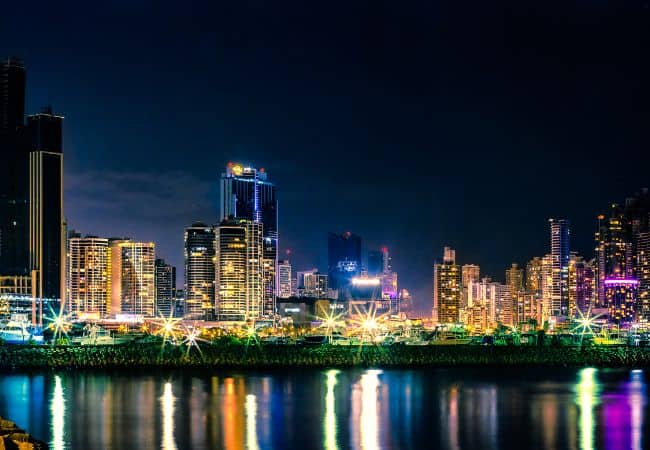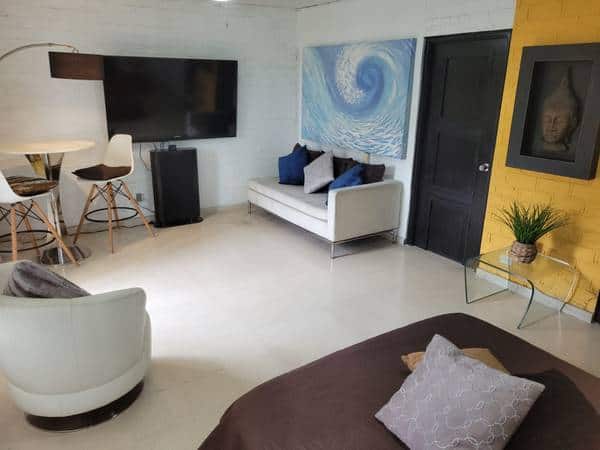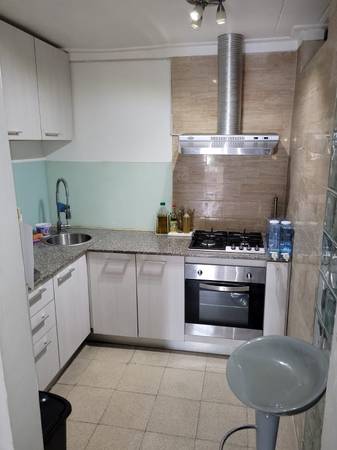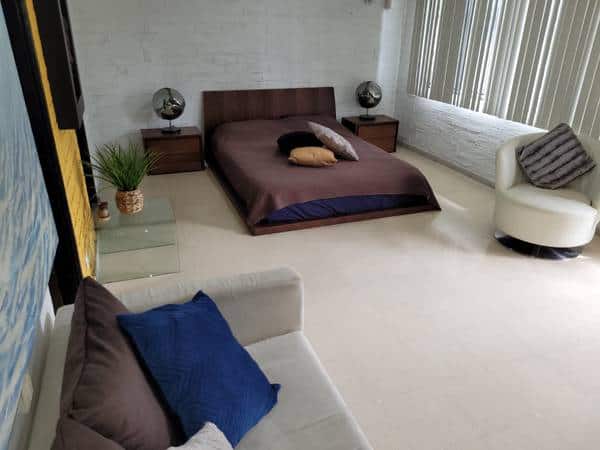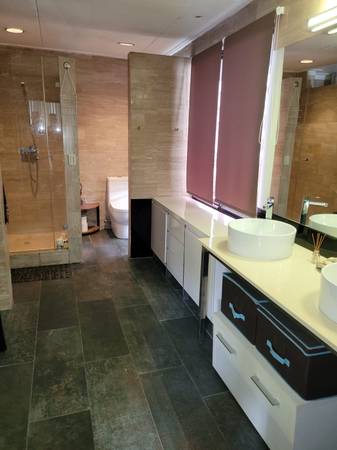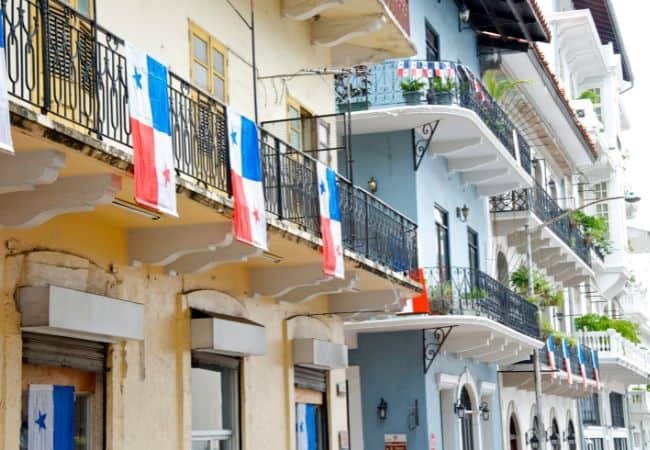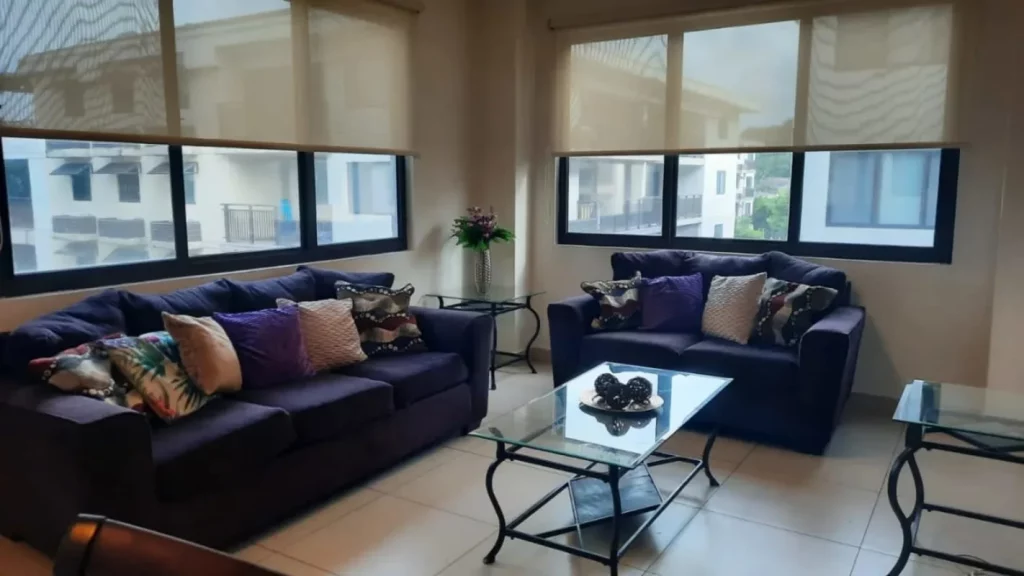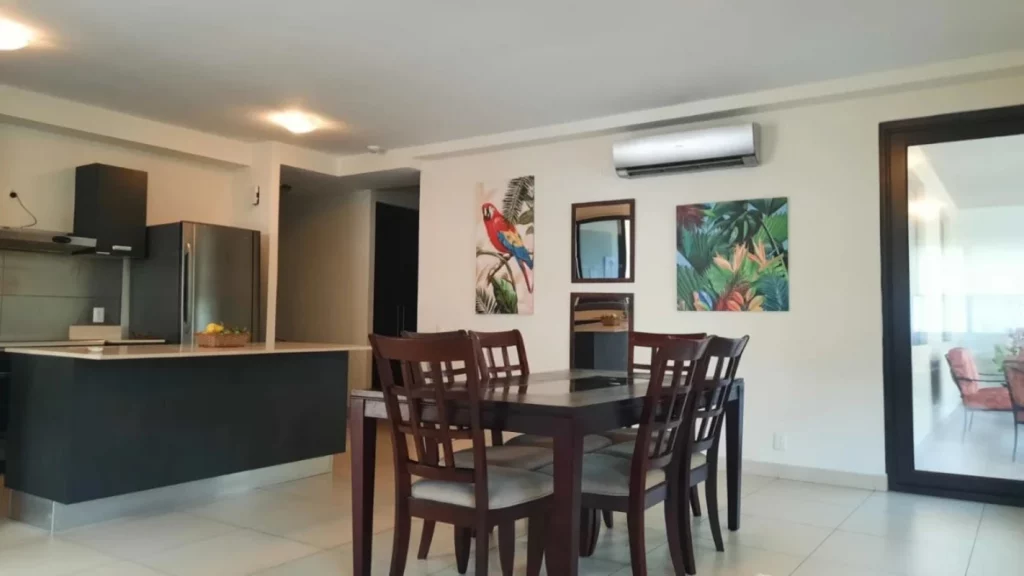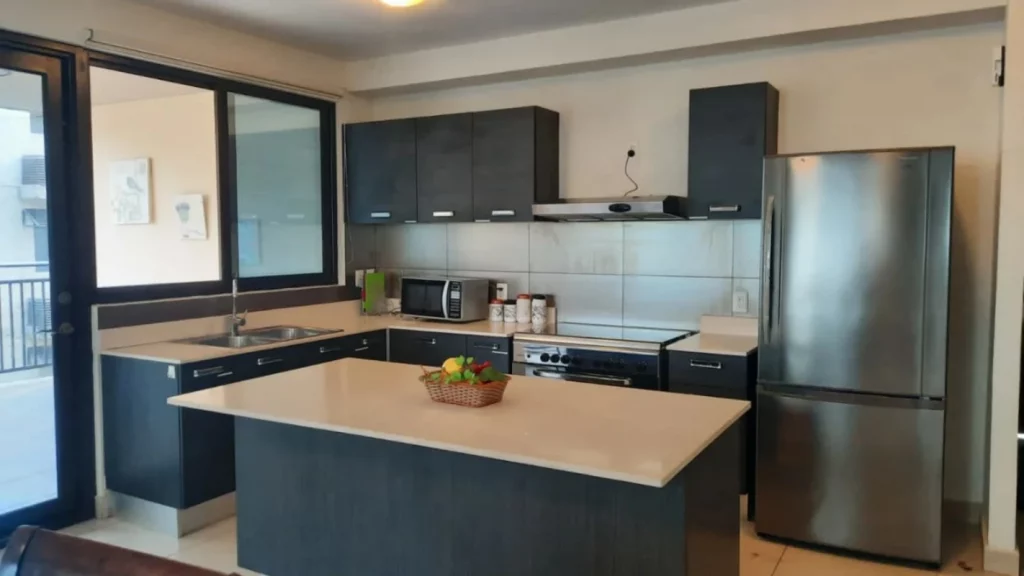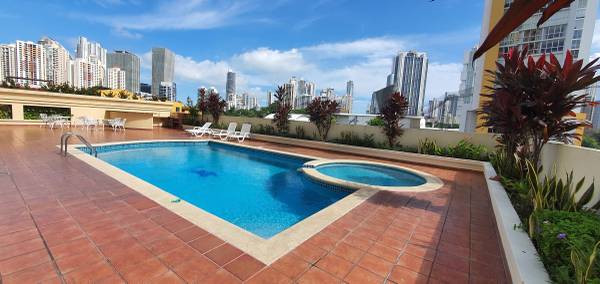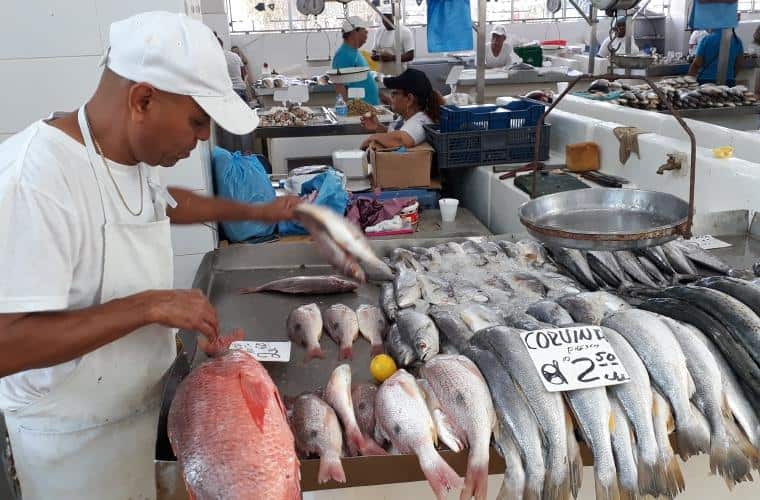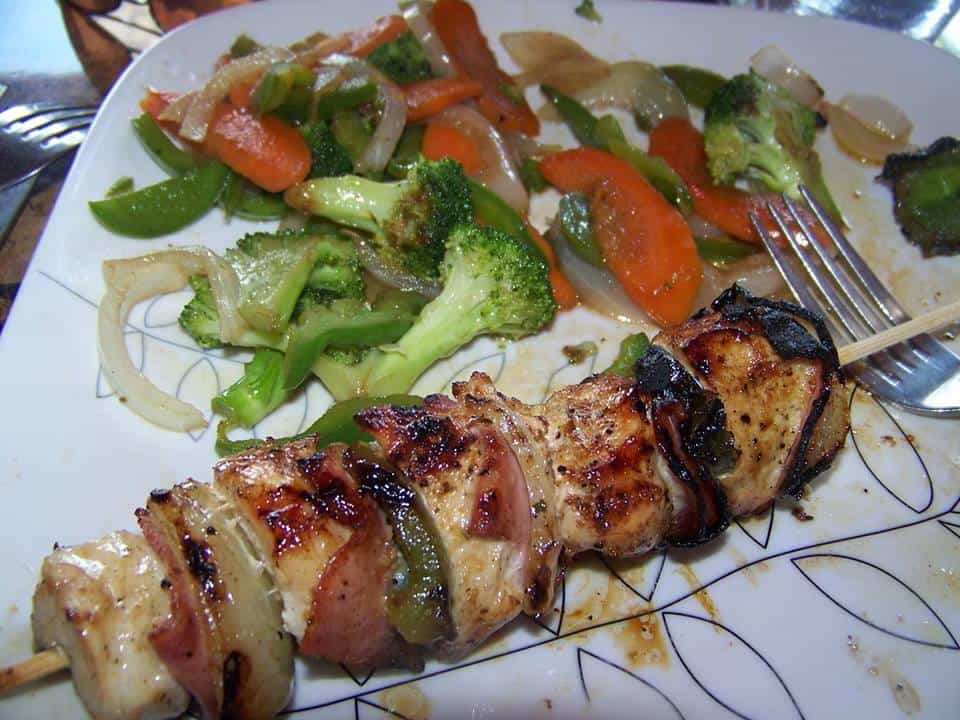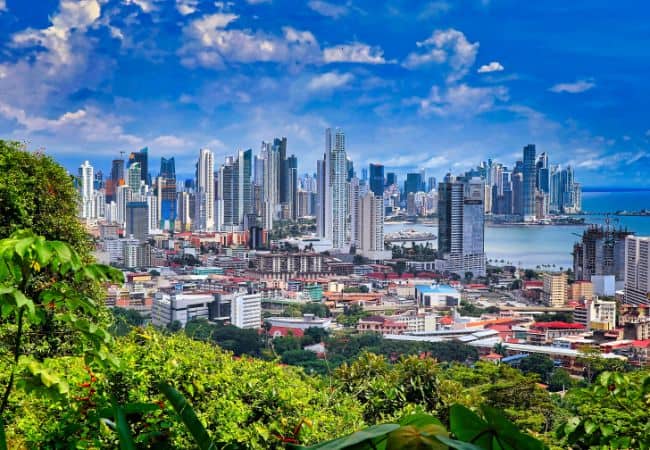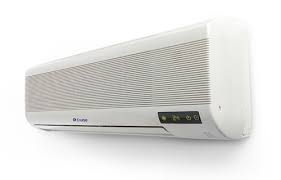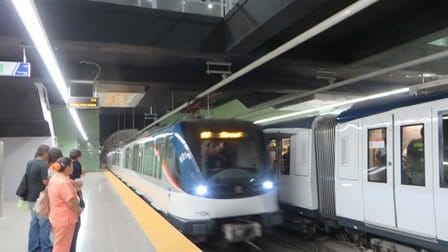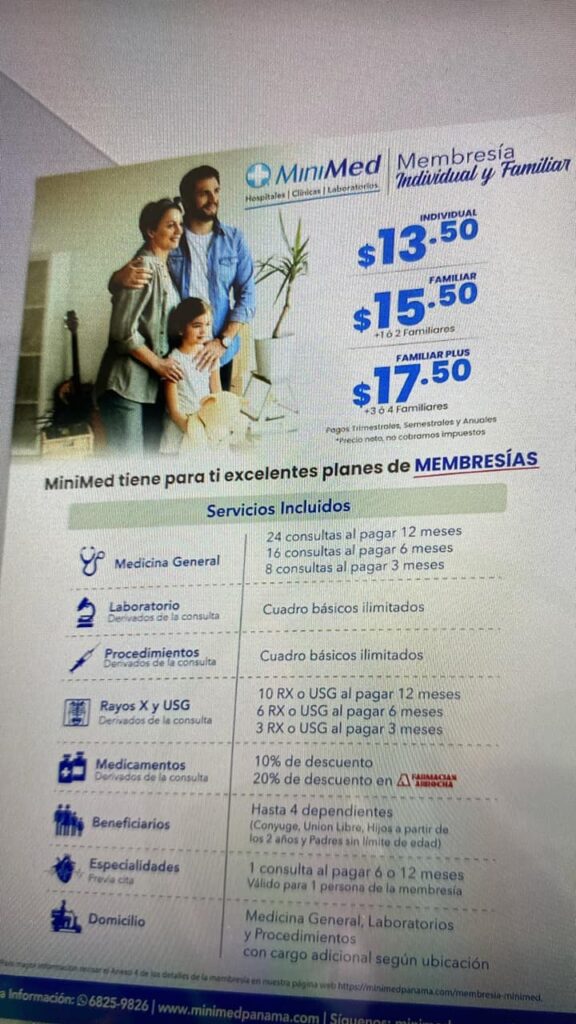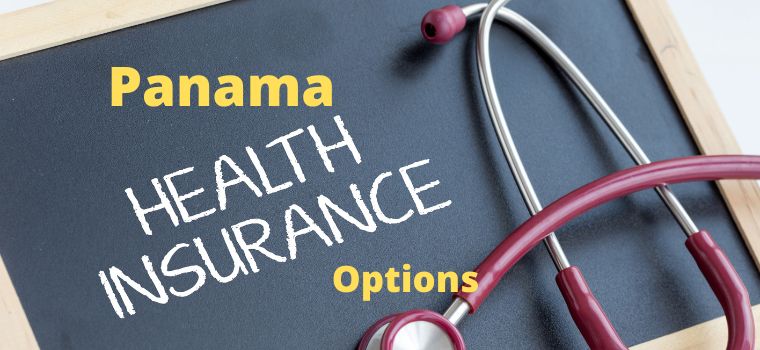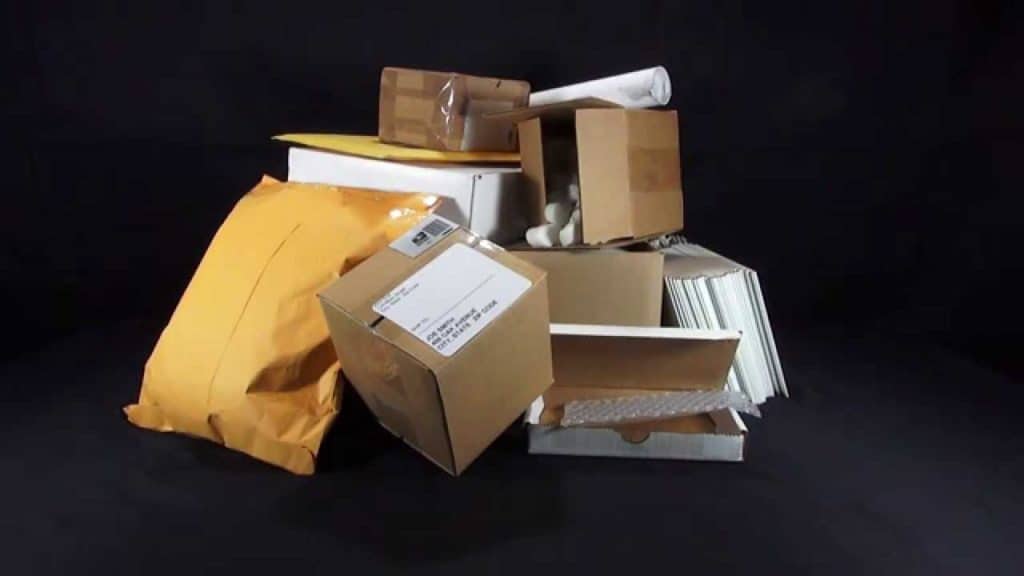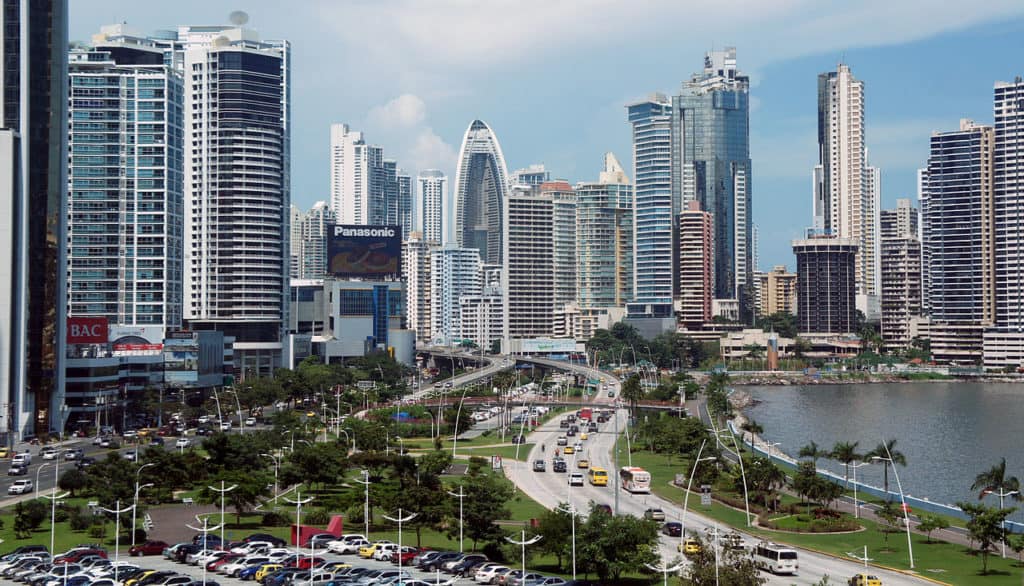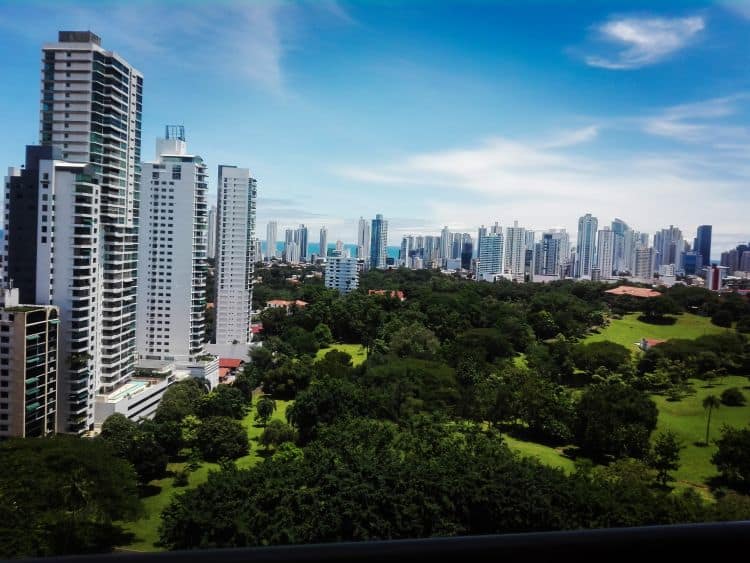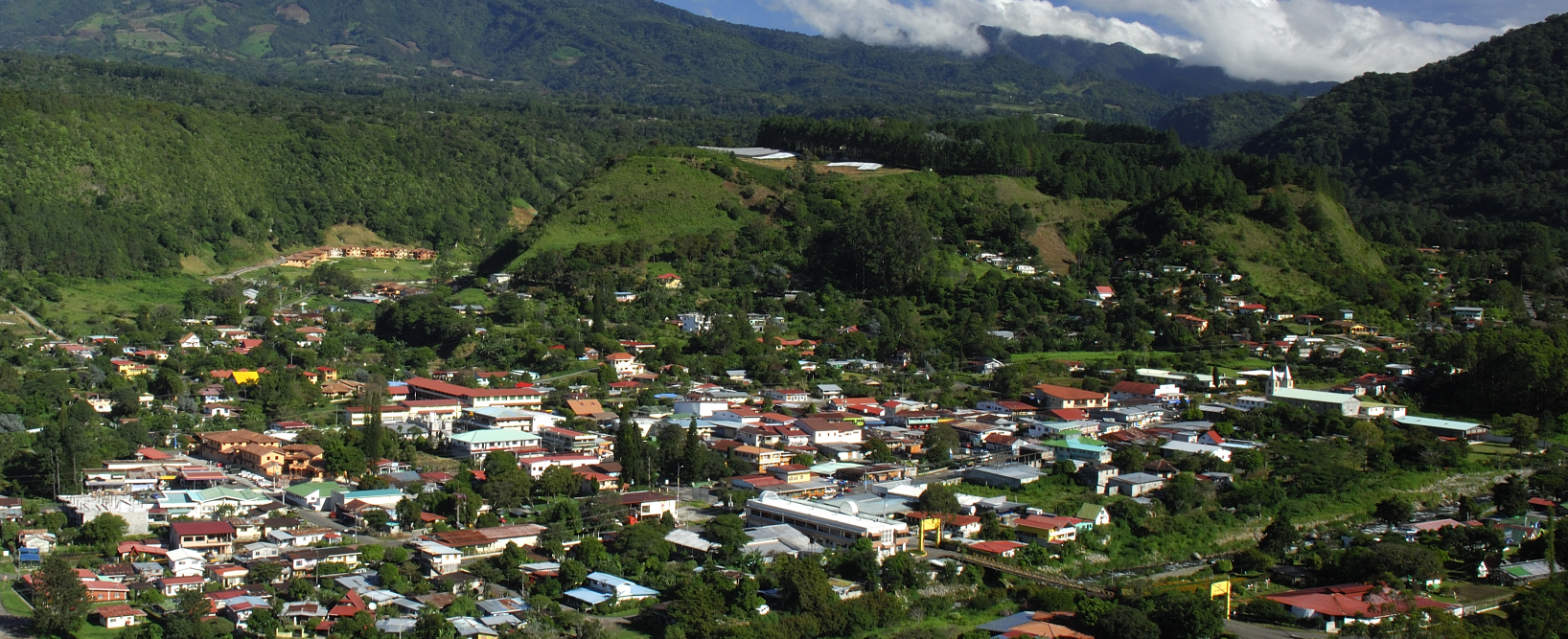Panama City is a more affordable place to live than some expat enclaves like Coronado or Boquete. As a bonus, you don’t need a car because public transportation is readily available in Panama City.
Many expats want to live in Panama City to be closer to a wide selection of first-class hospitals.
Another plus for Panama is that it is too far south to get hurricanes! Although there are occasional tropical storms, Panama does not have hurricanes!
One of Panama’s appealing characteristics for many expats is that the cost of living can be significantly lower than what you’re used to in the United States or Canada. But is this true in Panama City? Let’s find out!
Panama City is the largest city in Panama, with a population of almost 2,000,000. It is known for the Panama Canal, its wonderful tropical climate (average temperatures hover around 88°F all year), and its blend of modern and colonial-era neighborhoods.
Panama is a major international city. Thanks to the Panama Canal, it’s an essential city for trade, and many global companies have offices there. It has a stunning, modern skyline and overlooks the Bay of Panama.
Panama City offers excellent amenities, including a great healthcare system with a Johns Hopkins-affiliated hospital, an amazing culinary scene, and endless recreation opportunities.
Panama City has options to suit every lifestyle– if you’re looking for a busy city center with lively nightlife, you can find it. Or, if you prefer the peaceful life of the suburbs with access to amenities like shopping malls, gyms, and restaurants, you can find that too!
There are many parks in Panama City. The Parque Natural Metropolitano, a tropical rainforest within city limits, is one of the most exhilarating experiences the city has to offer. This 573-acre park is home to more than 200 bird species, including keel-billed toucans, the ultimate symbol of paradise.
Keep reading as we break down the cost of living in Panama City.
Cost of Rent in Panama
Rent will inevitably be your most considerable expense in Panama City. While rentals are available to accommodate a wide range of budgets, prices are typically higher in Panama City than in smaller towns. Rents have been coming down in Panama City which makes it a great place to live especially when you consider the convenience of other amenities.
Here’s an overview of what you can expect to pay for rentals in Panama City:
(Sources: Facebook Marketplace, Craigslist, and Encuentra24)
● Unfurnished 1 bedroom, 1 bath apartment near the city center – $550/month
● Unfurnished 2 bedroom, 2 bath apartment near the city center – $1,100/month
● Unfurnished 3 bedroom, 3 bath house outside the city center – $1,700/month
Add about $200 per month for a completely furnished apartment.
Of course, there are more expensive rentals in Panama City, too. And you can find more affordable rentals too!
Here’s an example from Craigslist of a furnished $580-a-month studio apartment on Via Argentina in Panama City:
Casco Viejo, Paitilla, and Panama Pacifico are popular Panama City neighborhoods among expats.
● Casco Viejo is the historic district of Panama City, settled in 1673. It’s popular among younger expats and digital nomads drawn to the area because it’s beautiful and compact. You can easily live in this area without a car– in fact, it’s preferable because the streets are narrow and parking is tough to find.
● Panama Pacifico is a 10-minute drive from downtown Panama City. Many expats are attracted to this area for its single-family homes, apartments, and industrial park. Southern hills lead down to bayside beaches, bars, and cafes, as well as resort hotels known for their spa facilities and upscale international restaurants. See this brochure about Panama Pacifica. See the photos below of a furnished two-bedroom for $1100
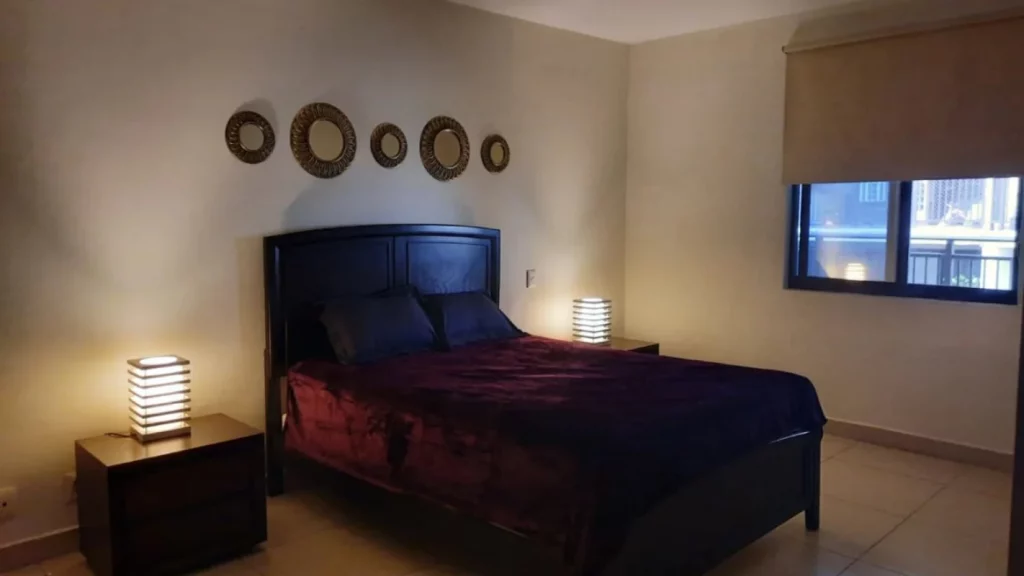
● Paitilla is in the heart of Panama City. It’s close to shopping centers (MultiPlaza Mall) and medical Centers (Pacifica Salud Hospital and Panama Clinic). The building’s location makes it easy to quickly reach banks, pharmacies, restaurants, supermarkets, and more. I found this two-bedroom, two-bath furnished pet-friendly rental for $1450 on Craigslist.
In Panama, it’s best never to agree to a long-term apartment rental without viewing it first. Photos can be deceiving, and neighborhoods may be louder than you envision. Before committing, you must see the property in person to ensure you feel comfortable and content in the space and the neighborhood.
This article has many helpful tips for finding a great rental, managing the rental process, and avoiding pitfalls.
Groceries & Restaurants
Groceries are generally very affordable in Panama, but your average expense will depend on where you shop and whether you buy many imported products, which are often more expensive.
You’ll find a range of grocery stores and supermarkets in Panama City. Riba Smith is a high-end supermarket, while El Rey and Super 99 are everyday supermarkets. Pricemart is a Costco-style market where you can stock up on essentials in bulk.
Local mercardo (farmer’s markets) and independent shops are really affordable and great places to stock up on fresh, locally sourced produce, baked goods, fish, and more.
If you’d like to save money in this area of your budget, learn to cook and shop as the locals do! Purchasing locally sourced products and national brands will lower your grocery bill tremendously, as will frequenting your local vegetable markets and neighborhood shops.
Panama City also has incredible restaurants in a variety of price ranges. On the low end, you can get a delicious meal for $4-$5 per person at a Fonda (Panamanian restaurant), whereas at a mid-range restaurant, you’ll pay closer to $10-$20 per person.
On average, expect to spend approximately $500 – $600 monthly on groceries for two people if you purchase a mix of locally sourced products and imported items.
Utility Costs in Panama City
Sometimes, your utility costs will be included in your rent in Panama, but not always. Here’s an overview of what you can expect to pay in utilities, but keep in mind that these costs may vary depending on the size of your home, the number of people in your household, and your usage habits.
In Panama City, electricity is usually not included in rent because some people use an air conditioner all the time. Your landlord may include the first $25 per month in electricity, but you’re responsible for all charges over $25.
Before you agree to rent in Panama City, get confirmation that the electricity bill is current. If there are outstanding charges, they must be paid before the electric company turns on the power for your house/condo.
Electricity
Because of Panama City’s warm, humid climate, you may rely on air conditioning and/or a dehumidifier to keep your home comfortable. If this is the case, expect to pay higher rates for electricity. Plan to pay between $100 and $200 per month for electricity, depending on the size of your home.
In Panama City, central air conditioning is rare. Most houses or apartments have split air conditioning systems in each room. To save money, only turn on the air conditioner in your room and keep the doors closed to the other rooms.
Water
The cost of water is typically included in the price of your rental. If it isn’t, plan to spend about $100 per year for unlimited water use.
Gas
Many high-rise condos have gas appliances, including stoves, dryers, and water heaters. Gas is usually included in your rent or HOA in Panama City.
Panama uses propane gas, which is delivered to your home in a 25-lb or 100-lb canister. Plan to spend about $5 per month on a 25-lb gas canister. However, this expense may be higher if you do a lot of cooking or use your dryer frequently.
Internet
Expect to pay between $35 and $60 per month, depending on the speed of internet service you require and the provider you choose. The best internet provider in Panama City varies depending on where you live and how your building is set up. It’s wise to ask your neighbors which company they recommend before you commit to a provider. See this report about Internet Speeds in Panama.
Phone
Cell phone plans in Panama are significantly less expensive than in the US. Expect to pay between $25-35 per month, depending on your carrier. Tigo is a popular cell phone service provider. If your current cell phone is unlocked, you can change the SIM card to convert it to your Panama phone. When you have Tigo, you can make international calls at no additional charge. And when you are traveling to other countries, you can use your Tigo phone with no additional charge.
Most people in Panama use WhatsApp to communicate. Be sure to download WhatsApp to your phone before coming to Panama.
Transportation
Panama City’s transportation is affordable, and there are several ways to get around. An excellent public transportation network, including buses, taxis, a subway, a metro bus system, and Ubers, means a vehicle isn’t necessary.
Whether you own a vehicle or not, budget around $50-$60 per month for transportation. If you have a vehicle, you’ll probably spend closer to $100 per month on fuel, insurance, and maintenance. If you own a car, verify that your rental includes a parking space.
You can catch a bus in Panama City to any destination in Panama. It’s affordable, too! It costs about $20 to take a bus from Panama City to David on the far western side of Panama, a 7-hour ride.
See this article about Taking the Bus in Panama.
Health Insurance
Medical care in Panama is extremely affordable compared to what you may be used to in the US, but health insurance is still a good idea.
An insurance plan from Family Medical Plan will cover you anywhere in Panama for approximately $102 per month if you are 60-69 years old.
Hospital Santa Fe, in Panama City. offers insurance with no age restrictions. They also accept many insurances from other countries.
Medical expenses are very affordable in Panama. A visit to the doctor typically costs about $15-$20, or $40-$50 if you need to see a specialist. These prices are without using insurance.
Some clinics in Panama City have a membership insurance plan for as low as $13.50 a month.
Some medications are more affordable in Panama, but some are more expensive. Before you make plans to retire in Panama, it’s a good idea to check the price and availability of your medications.
If you need prescription medication, you may be able to get it over the counter in Panama. Even if you still require a prescription, the cost is much less than what you pay in the United States. This report has a cost comparison of some of the most common prescription medications and their prices in Panama versus the US.
If you have the right Medicare Advantage plan, it can be used for urgent care and emergencies in Panama. Some hospitals offer direct billing.
If you’re a veteran, check out this article about the medical benefits available to veterans. Many hospitals in Panama City accept Tricare and FMP. If you have service-connected disabilities, be sure to register for the Foreign Medical Program.
Shipping and Postage
Panama doesn’t offer mail delivery to your home, so you must set up an account with a mail-forwarding company to receive mail from other countries. Some companies will deliver mail to your home in Panama City.
See this article about getting Amazon orders in Panama. There is no next-day delivery, and your Amazon orders will arrive in Panama in 7-10 days.
Depending on how often you shop online, budget between $20 and $50 per month for shipping and postage fees.
The Botton Line
Panama City is a diverse city that caters to different lifestyles. Your cost of living will vary depending on your neighborhood, the size of your home, and how you prefer to shop. Generally speaking, the base cost of living for two people in Panama City would fall between $1,395 and $2,920.
Here’s how your monthly expenses could break down:
Rent $550 – $1,500
Groceries & Eating Out $500 – $600
Electricity $100 – $200
Water is Included in rent (or $100 per year)
Gas $5
Internet $35 – $60
Phone $25 – $35
Transportation $60 – $100
Health Insurance $102
Shipping & Postage $50
Total Cost of Living $1,395 – $2,720
For a closer look at what life in Panama City could be like, consider booking a Private Tour of Panama City to learn more about the area!
During the all-inclusive 6-day, 7-night Panama Relocation Tours, we spend a day in Panama City, see rentals, do a hospital tour, meet an immigration lawyer, and meet expats who live there.
The video below is an interview with a couple who lives in Panama City:



